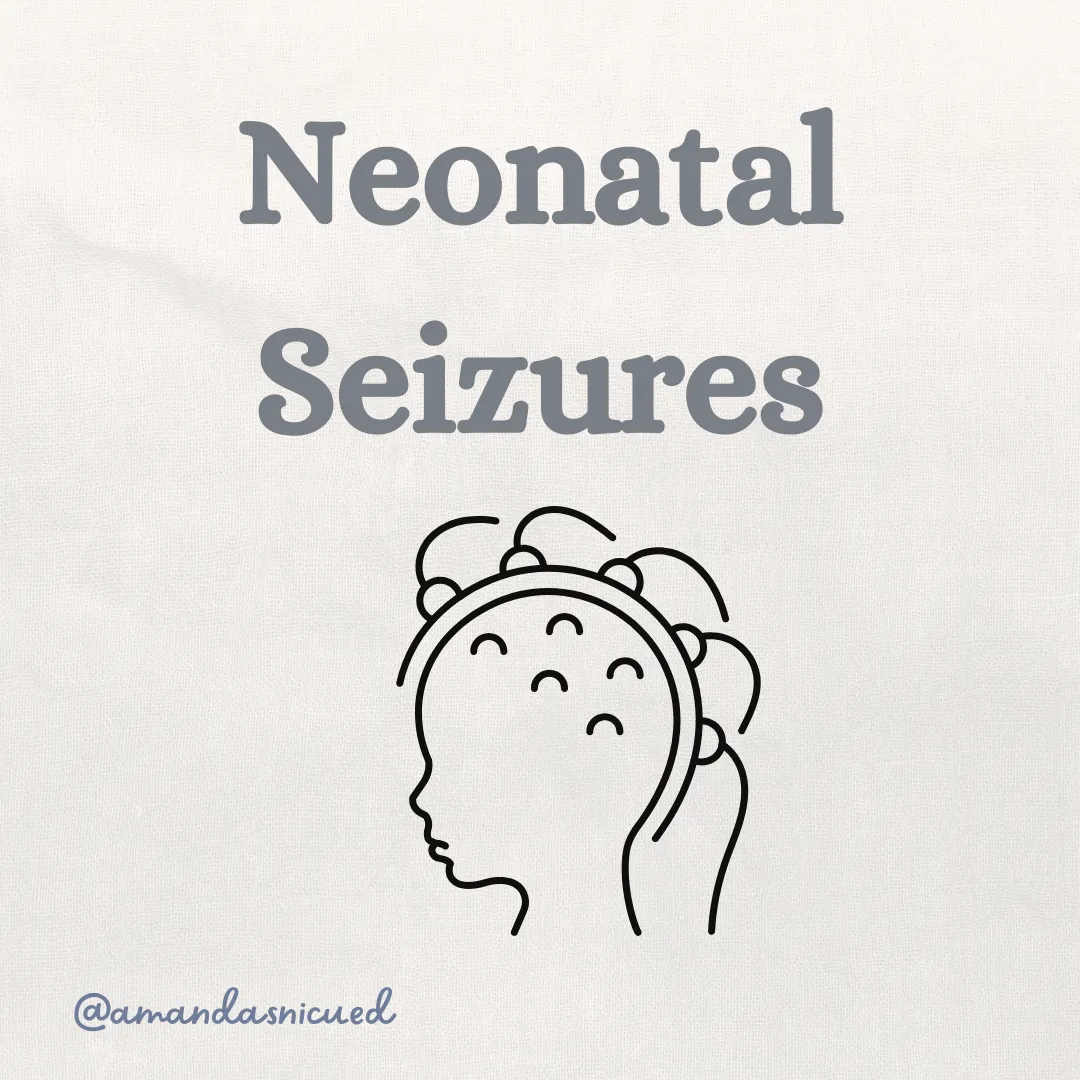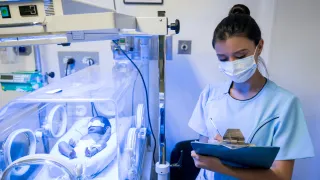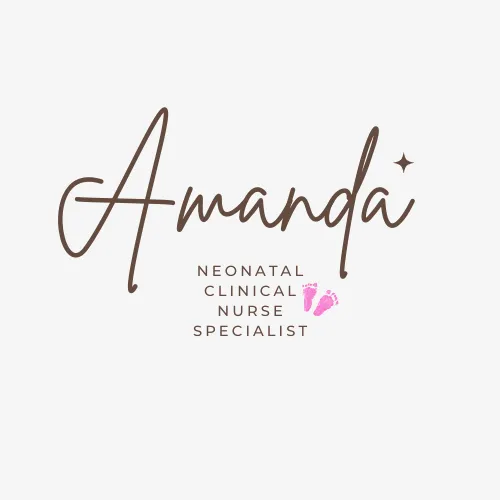
Welcome to Amanda's NICU Education




Hi! My name is Amanda. I'm a NICU nurse, Clinical Nurse Specialist, NICU Educator... basically your NICU BFF. If you want to talk NICU, I'm here for you! I love everything about NICU nursing and I'm eager to learn and share my knowledge with all my NICU friends.
I have been a NICU nurse since 2009 I am currently a Clinical Nurse Specialist in a Level IV NICU in Los Angeles.
I am passionate about educating the next generation of NICU nurses. I share my knowledge through platforms such as Instagram and Facebook and am excited to have you here on my website!
Click on the button below to sign up for my newsletter filled with NICU education and tips for all experience levels.

Not very many people love taking tests but as a self-acclaimed "forever student" who has taken (and passed) five different certification exams I am no longer afraid of tests! "Way to brag", you might be thinking but I want to help YOU pass your certification exam too!
Introducing Amanda's RNC-NIC Success digital course - your ultimate study companion!
Gain unlimited, on-demand access for life, ensuring you're primed to ace your certification exam.
I'm here to help you succeed and I can't wait for you to share with me that you PASSED the RNC-NIC EXAM!!!










Neonatal Seizures
"The most common cause of neonatal seizures is Hypoxic Ischemic Encephalopathy (HIE) and the neonatal period is the most common time in life for seizures to occur."
Neonatal Seizures
Seizures are a clinical sign that there is dysfunction in the central nervous system. They are not a disease themselves, but a sign of something else going on. The most common cause of neonatal seizures is Hypoxic Ischemic Encephalopathy (HIE) and the neonatal period is the most common time in life for seizures to occur.

What signs do neonates demonstrate that are concerning for seizure activity? Seizures are only correctly identified by healthcare providers about half of the time. This is because neonates can have many unusual movements that may look like seizures but are benign. One sign that can be confused for seizure is jitteriness or tremors.
A tremor is an “involuntary rhythmical oscillatory movement of equal amplitude” and jitteriness are recurrent tremors. When you are concerned about abnormal movements, first rule out tremors and jitteriness. You can do this by providing gentle containment of the limb. If the movement stops with containment it is unlikely to be seizure activity.
In addition to movement of the limbs, seizures can also involve interesting eye movements. These eye movements include horizontal deviation, staring, and blinking movements. Tongue thrusting or lip smacking are other signs that can be associated with seizure activity, but they can also be normal.
Apnea in term infants can be concerning for seizure activity, especially when associated with tachycardia, eye movements, hypertension, stiffening, or mouth movements.
Our patient might be having seizures... what's next?
When we are caring for a patient who may be having seizures, we must rule out causes that are reversible such as hypoglycemia or electrolyte imbalance (hypo/hypernatremia, hypocalcemia or hypomagnesemia). Hypoglycemia is the most common metabolic problem in neonates and is quickly treatable with a D10W bolus (2mL/kg) and maintenance IV fluids.
There are many other causes of seizures including infections, infarctions, intracranial hemorrhage, drug withdrawal, congenital malformations, inborn errors of metabolism, and other specific etiologies. The etiology is identified through a series of assessments and tests to provide diagnostic information:
Glucose
Electrolyte panel,
Blood gas,
CBC
Urea and ammonia,
Culture of blood, urine, and CSF,
Neuroimaging (head ultrasound, MRI, or CT scan)
Skull X-Ray (if etiology may be due to trauma)
cEEG or aEEG
TORCH screen
Lactate
Pyruvate
Urinary drug screen
Serum bilirubin if concerned for BIND
Genetic testing
Types of Seizures:
Subtle seizures are the most common type of seizure in preterm and term babies. Babies with subtle seizures have alterations in their behavior, motor function, and autonomic function that are often difficult to recognize and may be overlooked. Some examples include ocular movement (e.g. blinking, staring, horizontal eye deviation), oral movements (e.g. chewing, sucking), body movements (e.g. pedaling, limb posturing), and autonomic signs (e.g. central apnea in term infants, changes in blood pressure or heart rate, pallor, and increased secretions/drooling).
Clonic seizures are repetitive jerking typically in one extremity or one side of the body. Multifocal clonic seizures are characteristic of term babies with HIE.
Myoclonic seizures are rapid flexion and extension movements of extremities. Can be twitchy or jerky movements but are rare in the neonatal period.
Tonic seizures typically involve stiffening of the body mimicking decerebrate posturing. The eyes may deviate upwards and the baby may be apneic. Tonic seizures are characteristic in premature infants weighing <500g and are often seen with IVH.
Electroencephalogram (EEG)
Often times, seizures are subclinical in neonates. In other words, seizures are only seen on EEG and there are no clinical manifestations. Therefore infants who have having activity that is concerning for seizures should be placed on EEG.
There are different types of EEG:
Conventional EEG (cEEG): 12-16 sensors are applied by an EEG technician that provides information about the entire cerebral cortex. Can be technically challenging as an EEG technician is required to apply the sensors and an epileptologist is required to interpret the study
Amplitude integrated EEG (aEEG): 2-4 sensors that monitor the parietal and/or central positions. Has been adopted by many NICUs as it can be interpreted at the bedside by trained clinicians and applied by RNs.
Learn more about aEEG from my friends at Synapse Care Solutions
Treatment
Treatment of neonatal seizures consists of stabilizing the infant, ensuring airway, breathing and circulation are supported then sending labs to identify the etiology of seizure activity. Any acute transient metabolic conditions would be treated before starting anti-epileptics (eg. hypoglycemia, hyponatremia, hypernatremia, hypocalcemia, hypomagnesemia).
Phenobarbital is the first line anti-epileptic for neonatal seizures. A loading dose of 20mg/kg is given via IV over 10-15 minutes. If seizure activity is not captured, an additional 5 mg/kg may be given one hour later with a maximum of 40 mg/kg. Maintenance dosing of phenobarbital would begin 12-24 hours after the loading dose and is 3-4 mg/kg/day. Monitoring for therapeutic levels is important for guiding dosing frequency and avoiding adverse effects. High levels can result in respiratory depression, sedation, and hypotension. The ideal therapeutic range is 15-40 mcg/mL.
Other drugs that may be given include Phenytoin, Lorazepam, Midazolam, Levetiracetam, or Fosphenytoin. Historically phenytoin and fosphenytoin have been the most common second line anti-epileptics in the United States but newer drugs (e.g. Levetiracetam aka Keppra) have had more appeal. Levetiracetam is associated with fewer adverse effects and has high oral bioavailability.
The duration of anti-epileptics will depend on the etiology of the seizures. Medications are frequently continued post NICU discharged and slowly weaned off with the guidance of a Pediatric Neurologist.
As the NICU nurse, we are essential in educating the family about their child's seizures and anti-epileptic medications. Providing educational handouts about seizures, medication management, what to do if their child has a seizure, safety precautions, and follow up care.

I'd love to hear what you learned from this weeks newsletter. Email me back and let me know 🫶
Reach out to me anytime if there is a specific topic you would like to see, I always love hearing from you!
Talk to you soon.
Amanda xoxo
Missed my other newsletters? Click here to read them!
Let's Study Together! Join my Certification Course
References:
Guider, A. & McPherson, C. (2023). Neonatal Seizures in Fetal and Neonatal Pharmacology for the Advanced Practice Nurse. Springer
Hall, A & Ravey, D. (2021). Neurologic Disorders in Merenstein & Gardner's Handbook of Neonatal Intensive Care. Elsevier
Micromedex (2024) Levetiracetam Retrieved from www-micromedexsolutions-com
Ditzenberger, G. (2021). Neurologic Disorders in Core Curriculum for Neonatal Intensive Care Nursing
Gomella, Neonatology, 8th ed., Lange, 2020.

December 2023 Certification Review Webinar
NICU Certification Review



Ready to kickstart your journey to becoming a certified NICU nurse?
Look no further!
Grab my FREE E-Book packed with essential study and test-taking strategies for the RNC-NIC.
In the E-Book I give you the resources you need including the link to access the candidate guide, several types of books to study from, some of my favorite strategies, an outline of the content you should review, and a blank calendar for you to make your study plan!
Frequently Asked Questions About the RNC-NIC exam

What is the RNC-NIC?
The RNC-NIC is a competency-based exam that tests the specialty knowledge of nurses in the United States & Canada who care for critically ill newborns and their families.
The RNC-NICU is a nationally recognized certification that recognizes the registered nurse for their specialty knowledge and skill.

Who can take the RNC-NIC exam?
Nurses can take this exam after a minimum of two years experience in the NICU caring for critically ill newborns and their families.

Which books should I use?
I'm glad you asked! There are many excellent books to help you prepare for the RNC-NIC, I gathered ande describe each of them for you in my FREE e-book.
Is there a course to help me study?
Yes! Many hospitals host their own certification course and there are a few online courses. See my RNC-NIC test taking tips E Book for more information
What happens if I don't pass the exam?
If you don't pass the exam on your first try you can try again after 90 days. You will have to reapply after 90 days and pay a retest fee. There is no limit to the number of times you can take the exam (however a candidate can only sit for the exam twice per year).

Can I make more money if I take the RNC-NIC exam and get certified?
Yes! Many hospitals provide a raise or a bonus for nurses with specialty certifications. Hospitals also typically hire at a higher base salary when nurses have a certification.

Find me @amandasnicued on these channels or Email me
hey nurses don't miss out
© Copyright 2024. AmandasNICUEd. All rights reserved. | Terms & Conditions | Privacy Policy Contact: [email protected]

